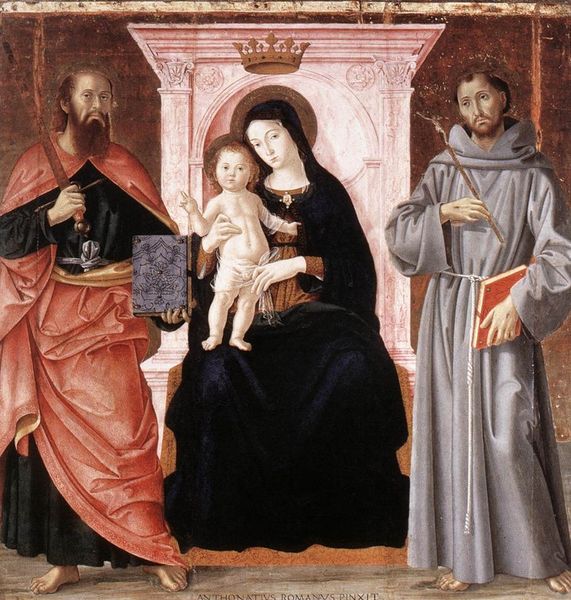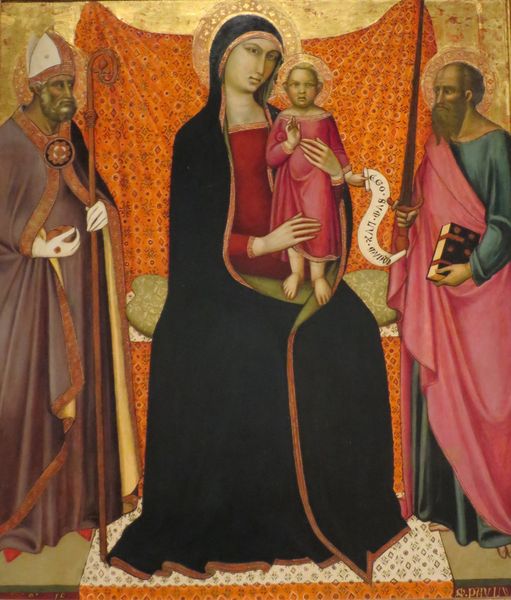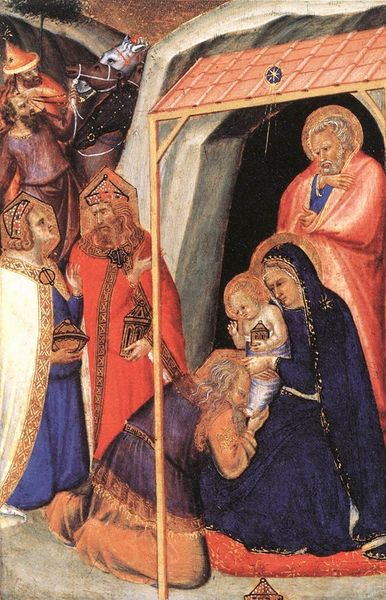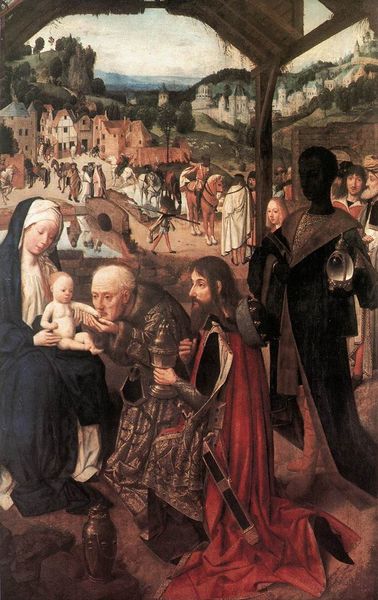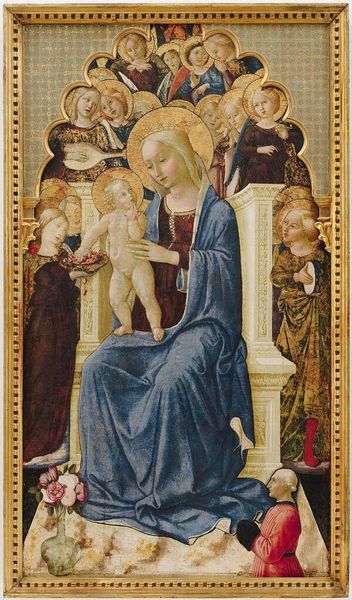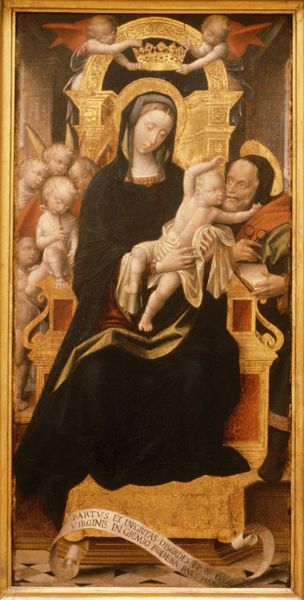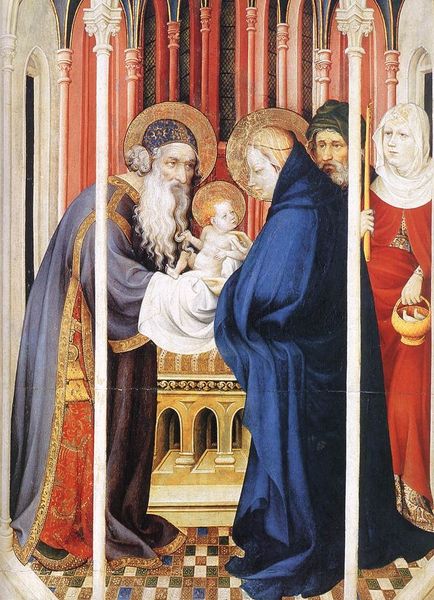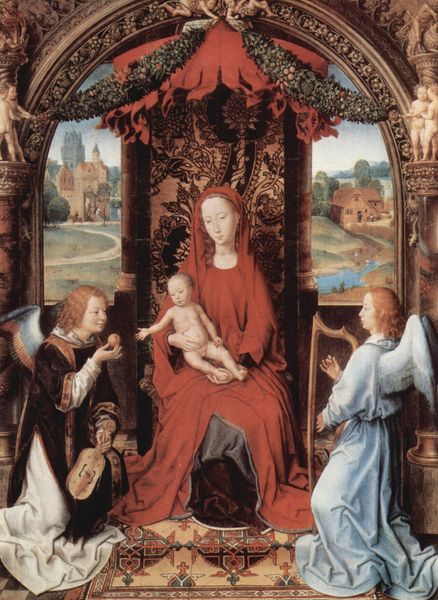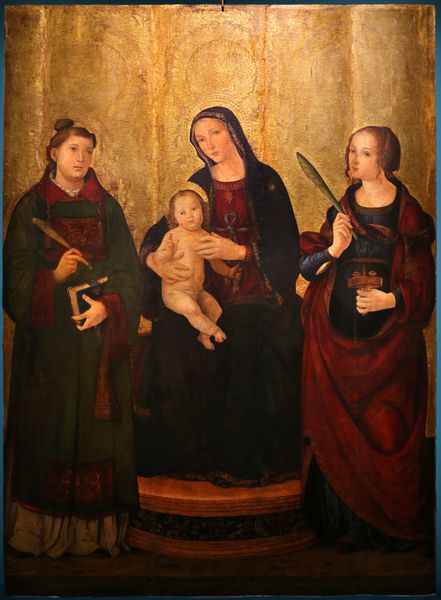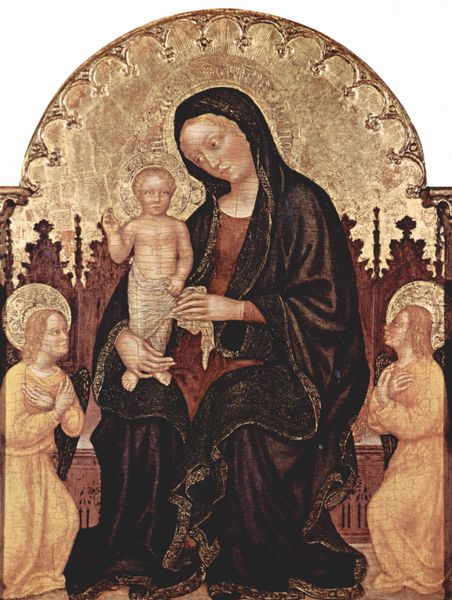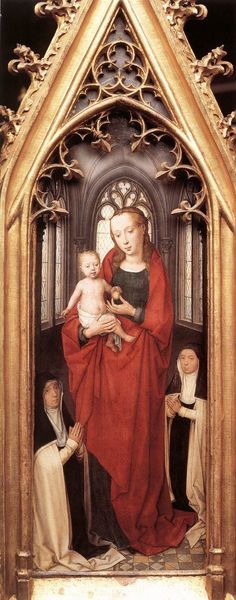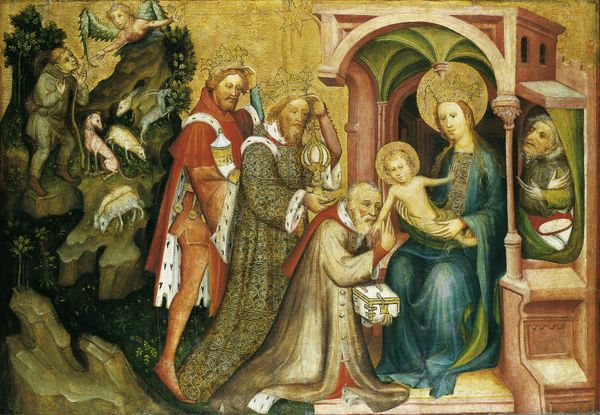
Madonna and Child Enthroned Among St. Benedict, St. Scholastica, St. Ursula and St. John Gualberto 1490
0:00
0:00
benozzogozzoli
National Museum of San Matteo, Pisa, Italy
tempera, painting
#
portrait
#
high-renaissance
#
tempera
#
painting
#
sculpture
#
oil painting
#
child
#
christianity
#
history-painting
#
italian-renaissance
#
portrait art
#
virgin-mary
#
christ
Dimensions: 153 x 133 cm
Copyright: Public domain
Curator: Here we have Benozzo Gozzoli’s “Madonna and Child Enthroned Among St. Benedict, St. Scholastica, St. Ursula and St. John Gualberto,” created around 1490 using tempera. Editor: Oh, goodness, that’s a mouthful! My first thought is…serious. Everyone looks incredibly serious. Almost like they're posing for a celestial school photo. Except for the kid, he's sort of squirming to get down, right? Curator: The painting situates Mary as both the Madonna, the Mother of God, but also, critically, as an allegorical figure of power and knowledge, right at the fulcrum of religious authority during the Renaissance. Note how her central positioning reinforces established hierarchies. Editor: True. But I find myself drawn to the almost pastel quality of the halos and their soft light around everyone. It kind of tempers that overwhelming sense of…doctrinal pronouncements, if you will. Like a quiet counterpoint. Curator: That may come from the tempera itself. Gozzoli's deft use of it in "Madonna and Child" shows an evolution from earlier styles towards more high-renaissance ideals of naturalism, yet even then he doesn't quite leave behind flattened perspective entirely. In doing so, the sacred image remains very clearly in a realm beyond daily human experiences. How do we interpret those intentional clashes today, I wonder? Editor: Well, maybe he felt conflicted? Like he knew people, even way back then, yearned for connection, not just sermons from on high. Plus, those colors…that reddish robe of Mary's, against the black. So gorgeous! Curator: The red signifies sacrifice and divine love—core concepts to this image's function within monastic contemplative practice during its era. In addition to her garments, we have to understand her relationship to the surrounding saints, key founders of significant religious orders whose presence here served specific didactic purposes within the community where it once hung. Editor: I guess looking at it now, understanding those layers is essential to moving beyond that initial…well, severity. Seeing how emotion peeks through makes this painting feel timeless instead of just…old. Curator: Indeed. Its enduring impact rests not just on artistic skill, but how it can stimulate dialogues around power, spirituality, and what endures beyond passing epochs. Editor: Definitely food for thought. Now if you’ll excuse me, I’m off to find something less serious to ponder…maybe a squirrel eating a nut!
Comments
No comments
Be the first to comment and join the conversation on the ultimate creative platform.
